Build a more sustainable future with insights on the latest policies and technologies impacting decision-makers and our industry.
2020 was a watershed year for Environmental, Social and Governance (ESG) investing in real estate as pandemic- and climate-related disruption, along with growing recognition of social inequity, prompted investors to adopt a more robust approach to sustainability-related risks.
60% of respondents to CBRE’s 2021 Global Investor Intentions Survey stated that they have already adopted ESG criteria as part of their investment strategies, with the Americas, EMEA and Asia-Pacific all recording a stronger focus on ESG issues than in previous years.
With ESG now playing a much more prominent role in how companies operate, investors are embedding ESG considerations into every stage of the property lifecycle, from due diligence to acquisitions and from leasing to asset management.
CBRE Global Research identifies 10 of the most important current ESG considerations for real estate investors and reviews the latest industry trends, innovations and regulatory requirements across these categories.
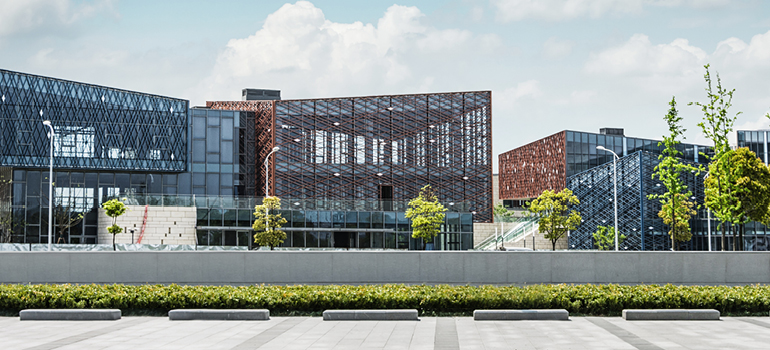
Environmental
Severe climate change-related weather events have been a near constant feature of the past 18 months. Commercial real estate investors are devoting more thought to ensuring how their portfolios can navigate through future crises.
1. Energy-saving/net-zero are the new normal
With operational emissions (energy used to heat, cool and light buildings) accounting for 28% of all global carbon emissions and embodied emissions (materials and construction processes during the entire building lifecycle) generating a further 11%, pressure is growing on building owners, operators and occupants to reduce their carbon footprint.1
While carbon reduction efforts may not necessarily generate higher investment returns, it will play a prominent role in preserving asset value as occupiers increasingly shy away from properties with subpar environmental performance. As occupiers and investors are drawn to properties that are more sustainable, these assets will be worth more.
Although property certifications such as LEED, BREAM and NABERS2 will remain important measurements of buildings’ environmental performance, the focus is shifting to initiatives such as the World Green Building Council’s (WGBC) Net Zero Carbon Buildings Commitment, which calls for all buildings to have net-zero carbon emissions by 2050.3
Other initiatives include the Race to Zero, a United Nations global campaign that challenges companies, cities, regions and financial and educational institutions to halve global emissions by 2030 and already has signatories equivalent to half of global GDP.4
Many investors are formally including carbon neutrality objectives in new investment strategies. These include Berlin-based Catella Residential, which has created a new international fund featuring a portfolio dedicated to energy-positive homes that generate more energy than they consume. The company’s developer partner recently built an energy-positive residential tower that was in line with average development costs. These energy profits are returned to building residents in the form of lower housing costs.5
Figure 1: Net-Zero Carbon Commitment by Select Real Estate Owners/Investors
Source: Company websites, CBRE Research, October 2021.“Green leases” between landlords and tenants to meet certain environmental objectives will become a more common tool for investors to monitor and drive the environmental performance of their real estate assets.6 Metrics may include electricity per occupant (kilowatt hours per employee), water used by area and the volume of waste disposed to landfill as a percentage of total waste produced.
While the shift to energy savings and net-zero emissions should be relatively easy for office tenants, investors will need to find solutions for retail occupiers, many of whom use energy-intensive lighting for product displays. Nevertheless, owners and operators can drive significant positive changes with green leases and technology.
For example, the City Square Mall in Singapore had all tenants agree to adopt green practices within its premises. The mall has auto-lighting on escalators and in car parks, saving more than 50,000 kilowatt hours (kWh) of electricity per year. High-efficiency air conditioners and Variable Air Volume (VAV) technology help moderate the mall's temperature, saving energy and limiting the emission of no more than 4,000 tons of carbon dioxide annually.
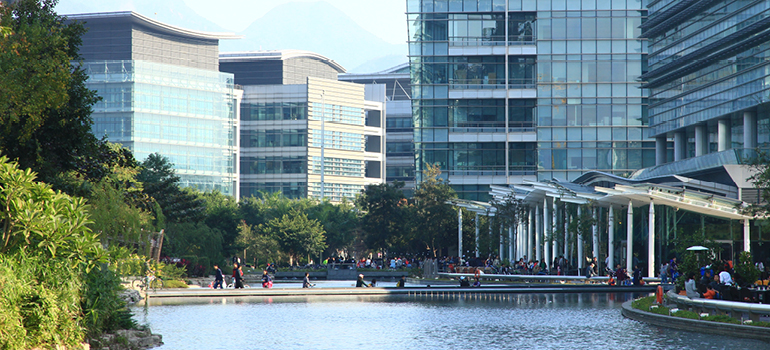
2. The gap between green rental premium and brown rental discount is widening
As buildings with strong environmental performance tend to be newer, premium assets, it can be challenging to pinpoint the sustainability premium. Nevertheless, there exists considerable evidence that green buildings command higher rents over comparable non-green properties, indicating considerable potential for a “brown discount” for properties with relatively weaker environmental performance.
U.S. office rents for LEED-certified office buildings are 5.6% higher than those for non-certified office buildings.7 The rental premium is particularly high for LEED Platinum-certified office buildings, which on average are projected to command 0.51% more annual growth than non-certified properties.
The income implications for investors are clear: Green buildings will command higher rents and higher capital values, while incurring lower monthly operating and maintenance costs. In the U.S., Energy Star-certified buildings consume 35% less energy than non-certified properties. In Europe, the Bloomberg London Building is the highest BREEAM-rated office building in the world, delivering water savings of 73% and energy savings of 35% compared with a non-rated building.8 Following the installation of new energy-saving technologies in 2020, annual energy consumption of Keppel Bay Tower in Singapore was half that of the typical office building in the city-state.9
Figure 2: Expected Additional Office Rent Growth by Certification Level, per annum
Rental premiums for environmentally certified buildings are currently only discernable in the office sector. However, other property types such as multifamily, retail, hotels and industrial will see the same trend once tenants and end-users begin to demand assets with high levels of environmental performance.
3. Green construction materials are available and viable
In addition to the building and construction industries accounting for almost 40% of annual global carbon emissions, manufacturing of concrete and steel each account for about 5%.
Viable alternatives, such as timber, are much more environmentally friendly due to carbon sequestration. Compared to an average steel and concrete building, which emits 1,000 to 2,000 metric tons of carbon dioxide during construction, a timber building will eliminate emissions by sequestering 2,000 to 4,000 tons of carbon dioxide. Chemically treated timber has resilient fire-proof qualities and performs well in earthquake resistance tests.
Timber construction costs vary by property type but on average can match or reduce costs relative to conventional materials. Timber also provides more cost certainty and can reduce construction time significantly due to pre-fabrication. U.S. developer Hines reports that while office building construction using timber might cost 5% to 10% more than concrete/steel, reduced construction time makes the net costs equivalent.10
Leading examples of recent timber construction include Stadthaus in London, a nine-story residential property built in 2009. Using timber reduced construction costs by an estimated 15% and shortened construction time by six months.11 In 2012, the construction of LifeCycle Tower ONE, an eight-story apartment building in Dornbirn, Austria, was completed in just eight days and at a cost only 2% higher than comparable concrete/steel projects.12 In 2019, Lendlease completed the development of International House, a six story timber office building in Sydney, now anchored by Accenture.
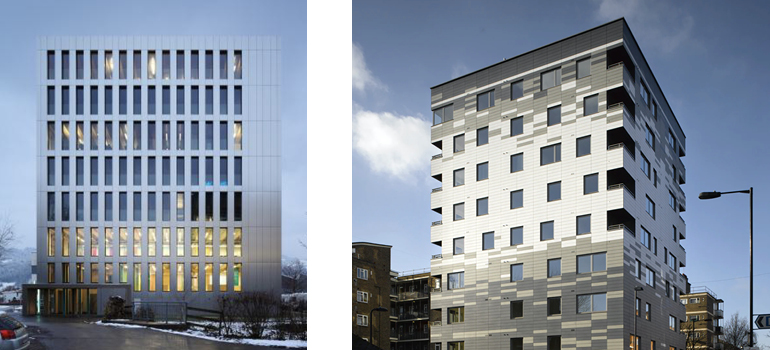
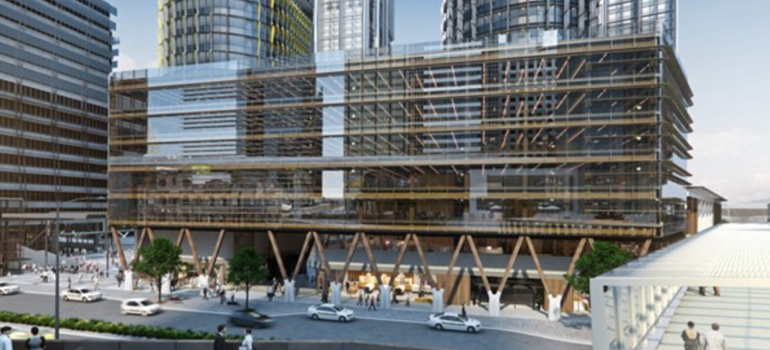
4. Regulatory requirements will continue to tighten
The number of ESG regulations affecting property owners has soared over the past decade, as governments and industry bodies mandate green reporting standards.
Recent legislation with ESG-related real estate impacts includes the European Union’s Sustainable Finance Disclosure Regulation that requires fund managers to disclose how all sustainability risks in their investment processes could potentially have a negative impact on the financial return of an investment.
The U.K.’s Task Force on Climate-related Financial Disclosures (TFCD), a new international standard for reporting on climate risks, will be mandatory for all fund managers in 2025.13 The European Union, New Zealand and Canada are also exploring the possibility of adopting the standard.
Green building codes are tightening and mandating higher sustainability performance requirements. In Australia, the NABERS building rating, which is now mandatory for office buildings larger than 1,000 sq. m., has helped participating office buildings reduce their average energy consumption by 35% and their carbon dioxide emissions by around 50%, with some buildings reducing energy consumption by as much as 80%.14
Since the Paris Agreement in 2015, the UN annual climate conference has brought the greatest global influence on climate actions. The COP26 conference in Scotland this November will likely set rules on cross-border carbon credit trades and climate finance, particularly funding for climate damage in less developed countries. This will shape the carbon market and set a course for universal climate-loss prevention.
As the trend toward tighter compliance accelerates, investors must ensure they have the expertise to stay on top of a rapidly shifting regulatory environment. As in other areas such as wages and working conditions, many of these regulations will set base standards. Investors and developers in markets where the regulatory environment is still at a nascent stage and who wish to become leaders in sustainability are advised to monitor and emulate practices in advanced markets.
5. Effective risk and cost management can enhance resilience
In the context of ESG and real estate, resilience refers to risk and cost management that ensure buildings continue to operate in disruptive situations such as the pandemic and extreme weather events.
Many of the biggest risks facing the built environment are climate related, with extreme weather frequently leading to significant property damage. In the past few months alone, wildfires have devastated parts of California, Turkey and Greece, while floods have caused deaths and widespread damage in Western Europe and China.
As climate-change risks increase, costs are rising. Global property insurance premiums have grown by a double-digit percentage in each of the past seven quarters as real estate portfolios sustain physical damage from natural disasters.
Figure 3: Global Property Insurance Composite Pricing ChangeClimate change is also contributing to higher utility costs due to more expensive energy production. For example, extreme heat in many countries is driving demand for air conditioning and increasing real estate operating costs.
The longer-term consequences of climate-related risks include policy and technological changes that can dampen the investment appeal of a certain asset type or sector. Older properties are particularly vulnerable, with poor energy efficiency leading to a “brown discount” in property values.
Investors seeking to improve risk and cost management and strengthen resilience must identify their portfolio exposure to climate-related risks and take measures to address vulnerabilities in each asset. MSCI’s Climate Value-at-Risk Index is a strong measurement tool for investors to quantify the potential impact of climate change. It also considers governance framework, which plays a substantial role in delivering resilience and enabling management to respond effectively to challenges, risks and crises as they emerge.
Quantifying the potential impact of climate change
MSCI’s Climate Value-at-Risk (Climate VaR) quantifies the potential impact of climate change on real estate globally. The tool estimates the potential financial costs to real estate owners from climate change—both physical risk (damage from increased extreme weather events) and transitional (cost of lowering future carbon emissions) risks.15
Most of the variation in aggregate Climate VaR is driven by physical risk rather than transition risk. Within the physical realm, certain coastal markets are at highest risk because of exposure to flooding.
Among the markets listed in Figure 4, Paris currently has the lowest Climate VaR on both elements of risk. French property isn’t particularly energy efficient compared with the global average but tends to have low emission intensity due to a higher contribution of nuclear power in the energy mix. Physical risk is negligible due to Paris’s inland location and low fluvial flooding risk. Berlin, London, Sydney, Chicago and New York had similarly low Climate VaR below 5%, effectively maintaining real estate values in the face of environmental challenges.
In other markets like Rotterdam and Amsterdam, climate risk could potentially put approximately 40% of index constituents' value at risk. This risk is almost entirely driven by coastal flooding exposure given the Netherlands’ low elevation relative to sea level. In markets like Copenhagen, Boston and Dublin—with flooding exposure to a lesser but still significant degree—asset value depreciation could reach 20% or more.
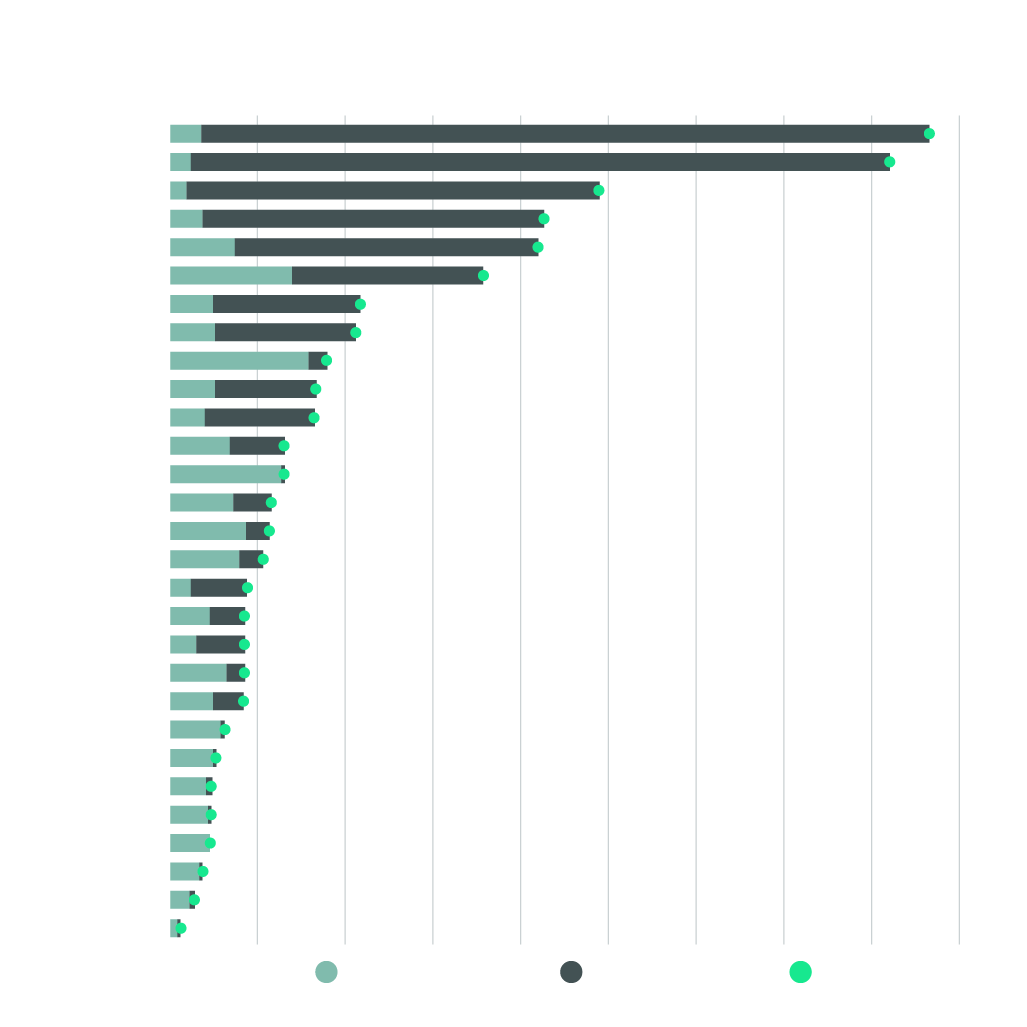
In addition to resilience from catastrophic events, environmental considerations also include a building’s carbon footprint and its water and waste management practices.
Government regulations, occupier demand for green buildings and greater awareness of climate change-related issues are driving a sharper focus on these aspects of building performance, with far-reaching implications for investors.
Social
Real estate is unique as an asset class in that it is an integral component of neighborhoods and communities, is occupied by a broad range of users (including families, students and companies), cannot be physically moved and influences the value and character of surrounding properties and land uses.
With property being essential to the economic health of a region and the productivity to all who use it, real estate has a profound social impact on the communities in which it is located.
6. Affordable housing offers attractive “impact investing” opportunities
CBRE defines impact investments as those that generate significant social and environmental benefits, while also providing strong financial returns.
With worsening housing affordability and half of all renters paying more than 30% of their income on rent, the U.S. offers substantial impact investing opportunities in the affordable housing sector—both government-sponsored and market-rate.
The main target demographic for affordable housing is families that earn less than 60% of the Area Median Income (AMI). “Workforce housing” initiatives being pushed by policymakers could expand the availability of affordable housing to many middle-class families, who make around 60% to 120% of AMI and are also struggling with rising home prices.
Value-add multifamily asset investments that involve significant property upgrades generally provide returns in the low- to mid-teens, offer stable income and hold their value, often outperforming other real estate sectors during periods of economic volatility.
Despite a commonly held assumption that there is a tradeoff between creating positive social impacts and obtaining attractive investment returns, many investors are realizing favorable returns from their impact portfolios. These include PGIM Real Estate Impact’s Value Partners Fund VI, which focuses on the transformative development of sustainable real estate and low- to moderate-income housing in major U.S. markets with anticipated population and economic growth. The fund has raised US$363 million and aims to achieve 12% to 14% gross internal rates of return.
Turner Impact Capital's Turner Multifamily Impact Fund II (“TMIF II”), which has raised US$357 million and is targeting a 10% net return, focuses on developing community-serving infrastructure, health care facilities and affordable rental housing, while J.P. Morgan Asset Management Urban Renaissance Property Fund, which has raised US$175 million and is aiming for a 15% annual return net of fees, is dedicated to investing in urban renewal projects that include affordable housing.
Recent successful urban renewal and affordable housing projects include the redevelopment of the Hahne & Co. building in Newark, N.J. by a joint venture between affiliates of L+M Development Partners, Prudential’s Impact Investments Group, and Goldman Sachs Urban Investment Group.. The building was converted into a mixed-use development including 160 mixed-income apartments, 40% of which are affordable units, together with commercial and community space. Since its completion, the property has achieved high occupancy and rental rates above pro forma estimates.
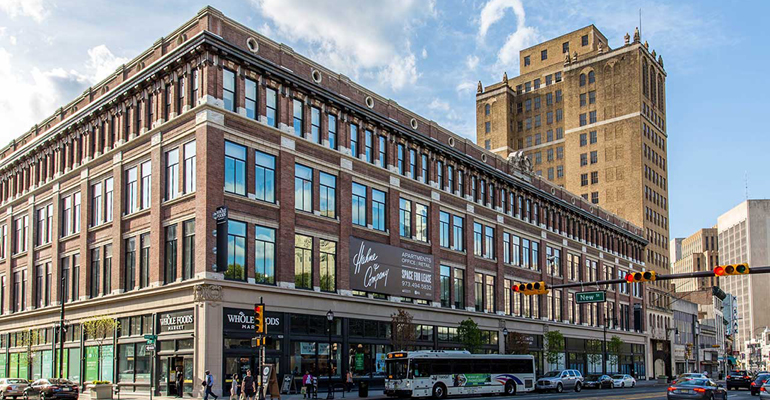
7. Health & wellness is influencing building design and operation
While workplace wellness had already been high on office investors’ and landlords’ agenda because of its role in attracting tenants, the COVID pandemic has led to increased demand for workplace wellness features by office occupiers. Meanwhile, the health and safety of construction workers are increasingly important to asset development and management.
Proper air ventilation and filtration are emerging as a key focus, not only to prevent the spread of illness but also to increase employees’ energy levels and overall mental health. Actionable items to improve airflow include higher ceilings for better air circulation, allocation of at least 50 sq. ft. of space per person and measurement of air flow and pressure rates.
The pandemic has also heightened awareness around hygiene, prompting landlords and facilities managers to conduct more intensive and regular cleaning, especially of shared equipment and amenities such as elevators; provide protective products such as hand sanitizer, disinfectant and masks; and install signs and other information points advising building occupants on how to maintain cleanliness.
Other short-term and low-cost steps to enhance workplace wellness include ensuring natural light at workstations, offering healthy food options, providing exercise opportunities and organizing counseling sessions for employees.
Many landlords have formalized their approach to wellness by adopting the International WELL Building Institutes’ (IWBI) WELL Building Standard, which is the premier standard for buildings, interior spaces and communities seeking to implement, validate and measure features that support and advance human health and wellness.16
WELL consists of more than 100 features across 10 key areas: air, water, nourishment, light, movement, thermal comfort, sound, materials, mind and community. Each addresses the design and operation of buildings and how they impact and influence health and wellness-related human behavior.
As occupiers place a greater emphasis on building amenities that enhance employee health and wellness, properties with sustainability and wellness features, particularly those related to indoor air quality, ventilation systems and other indoor environmental features to improve employee comfort, will attract stronger demand in the long term—a trend that could also hasten the development of more WELL-certified buildings.
WELL sets certain standards for indoor air quality as it relates to particulate matter and inorganic gases. These standards can be met by installing high-quality HVAC systems. A study by the University of Minnesota Twin Cities found that some High Efficiency Particulate Air (HEPA) filters can filter 99% of pollutants under 0.1 micrometers.17 This may also help mitigate the spread of some viruses such as COVID-19.
Stronger occupier demand for properties that provide high-quality air, ventilation systems and other indoor environmental features will require landlords and investors to recalibrate their strategies accordingly.
10 Key Areas of WELL
- Water
- Nourishment
- Light
- Movement
Governance
As governments and shareholders demand greater transparency and reporting of these issues, real estate investors will need to ensure their governance often goes beyond minimum compliance with relevant regulations.
Governance covers issues such as executive compensation, management diversity and structure, policies and practices related to preventing corruption, the payment of taxes and political donations. Governance also relates to a company’s values, ethics and “doing the right thing.”
8. Corporate social responsibility is key to good governance
Corporate Social Responsibility (CSR) is increasingly influencing corporate governance practices and principles. Central to this is creating a corporate culture with a set of shared values for a company to help its employees and the communities in which it operates.
Equity, diversity and inclusion are key components of governance, as is enhancing the transparency of procedures and decision-making, particularly regarding progress toward ESG goals. Policies such as employee child care, vendor selection and treatment, and tenant engagement and relations also fall under this subcategory of governance, which prioritizes the wellbeing of employees and aims to enhance their workplace experience.
By creating a strong ethical and social platform, companies can strengthen operational resilience and be better positioned to withstand any crises, such as periods of economic volatility, climate- and health-related risks, and disruptive competition.

Many real estate investment companies and entities, including REITs, are already adopting CSR policies. These include U.S. multifamily REIT Camden Property Trust, which is ranked 8th on Fortune’s 100 Best Companies to Work For. More than 90% of the company’s employees say it is a great place to work, well above the average of 59% at a typical U.S.-based firm.18 The company paid US $3 million in bonuses to frontline staff in 2020 and provided individual relief grants of up to US $3,000 for more than 350 workers who were financially vulnerable. Analysis shows the company eclipses its peers in terms of equity market performance.
As well as enhancing company performance, particularly during economically challenging times, the impacts and benefits of sound CSR practices are manifold and include higher price targets for publicly listed companies and a lower weighted average cost of capital. Public REITs in most markets already provide annual ESG reports.
9. Benchmarking and reporting will be essential
As investors attempt to monitor and evaluate asset-level ESG performance, the use of benchmarking tools such as the Global Real Estate Sustainability Benchmark (GRESB) will become increasingly prominent. GRESB gathers and compares data on the ESG performance of real estate and infrastructure entities.
Entities are given a GRESB score that measures their ESG performance in absolute terms, along with a GRESB Rating that ranks them among their peers. Participants also receive a summary analysis of performance, showing strengths and weaknesses across categories such as leadership, policies, risk management, health and safety, greenhouse gas emissions, building certifications and stakeholder engagement.
CBRE Global Investors UK Property PAIF, a £1.5 billion diversified property portfolio, raised its GRESB rating to 75 in 2020 from 60 in 2019 (100 is the maximum), lifting it to the performance range of its peer group. This was accomplished by enhancing tenant data collection and building sustainability performance.
Other initiatives include the Principles for Responsible Investment (PRI), which require signatory investment managers to incorporate ESG criteria in their investment processes covering a minimum of 50% of the company’s total AUM. Companies must come up with a plan to incorporate ESG factors into all portfolios and think creatively about how they will aggregate the outputs from each individual fund up to the company level. Data from shareholder advisory firm Square Well Partners shows that 96% of the world’s top 50 asset managers have adopted PRI as of year-end of 2020.19
As part of the shift toward benchmarking and reporting, CBRE expects to see a stronger asset-level focus on ESG data. While green building certifications such as LEED, BREEAM and NABERS will remain essential, property owners, managers and investors will increasingly be expected to provide granular data on ESG aspects of building performance such as indoor air quality, power consumption, water usage and waste management to help tenants identify opportunities that drive sustainable performance.
ESG data will be the passport of the future for buildings, enabling investors to make informed decisions about asset performance based on benchmarks and frameworks that are critical to their business. ESG ratings or certifications will also be an important criterion for decision-making by investment fund managers. This will require property managers and investors to enhance monitoring and analysis across their portfolios and strengthen tenant engagement to obtain data on building performance and identify opportunities for improvement.
10. Technology is critical to achieving ESG goals
As the focus on ESG strengthens, technology will play a key role in creating significant and long-lasting change within investors’ practices and portfolios by enhancing the collection and reporting of ESG data.
These technologies include data management platforms to store and process ESG data, monitoring platforms to streamline ESG review and delivery processes, and Prop Tech-based platforms to enhance the tenant experience.
Enablement technologies to monitor and enhance the energy performance of buildings will also see greater adoption. Technology exists that can be plugged into a property’s Building Management System (BMS), retrieve energy data in real time and arrange and analyze it to determine the best strategy to improve energy efficiency and reduce costs.
Platforms that can measure and improve social performance are mainly focused on occupant wellness and include building-level ratings such as Fitwel, which optimizes buildings to support health.20 Fitwel provides an overall building rating based on certain features such as outdoor space, workspaces, shared spaces, water supply and food services, among others.
The GRESB certification’s real estate assessment also includes a management component that measures an entity’s strategy and leadership management, processes and policies, risk management practices and approach to stakeholder engagement.21
Overall Analysis
As ESG criteria hold, investors are taking steps to implement changes, mitigate risks and returns. As part of the top 10 considerations outlined in this report, we suggest investors use Figure 9 to rate themselves on ESG criteria adoption on a scale of 0 (low) to 5 (high).
Figure 8: Rate Your Company in Top 10 ESG ConsiderationsSouth Africa
Excellerate on Summit, 3A Summit Road, Dunkeld West Gauteng, 2196
Landline: +27 11 911 8000Connect with us to learn more about our services.
Bahrain
Office 13, Building 1900, Road 5539, Qalali 255, Bahrain
Landline: +971 (0)52 278 4163Connect with us to learn more about our services.
Botswana
Plot 39, Unit 3, Gaborone International Commerce Park, Botswana
Landline: +27 76 730 4314Connect with us to learn more about our services.
Cameroon
155 Rue Sylvani Akwa, Boneleke, Douala, Cameroon
Landline: (+225) 07 78 88 23 53Connect with us to learn more about our services.
Cote d'Ivoire
Abidjan Cocody, Route de la Corniche, BP 779, Cidex 03, Abidjan, Cote d'Ivoire
Landline: +225 07 78 88 23 53Connect with us to learn more about our services.
Egypt
Cairo Business Plaza Building, El Tesaeen, El Shamaly St, CAIRO, Egypt
Landline: +201 008474444Connect with us to learn more about our services.
Ghana
1st Floor, One airport square Airport City, Accra, Ghana
Landline: +233 302 747 981Connect with us to learn more about our services.
Kenya
Grenadier Tower, 2nd Floor, 1 Woodvale Close, Westlands, Nairobi, Kenya
Landline: +254 20 444 2061Connect with us to learn more about our services.
Mali
Bamako, Hamdalaye ACI 2000 immeuble Tidiane Gamby bureau numéro 1 S/C du Cabinet Africain de Conseils
Landline: (+225) 07 78 88 23 53Connect with us to learn more about our services.
Morocco
97 Boulevard Massira El Khadra - 1er Etage, 20100 Casablanca, Morocco
Landline: +212 5227 78980Connect with us to learn more about our services.
Namibia
Sanlam Center, Independance Avenue, Windhoek, Namibia
Landline: +26 46 125 2095Connect with us to learn more about our services.
Nigeria
The Bureau Office, A03, 3rd Floor, 28 Raymond Njoku Street, South-West Ikoyi, Lagos Nigeria
Landline: +234 201 330 0359Connect with us to learn more about our services.
Oman
lkhuwair 42, Muscat al Maha street, Building no.513 1st floor, Office no. 101 & 102
Landline: +96 822 533562Connect with us to learn more about our services.
Qatar
Palm Tower Block B, 15th floor, PO Box 20048, Doha, Qatar
Landline: +974 4034-2060Connect with us to learn more about our services.
Rwanda
Kacyiru Gasabo Umujyi wa Kigali Rwanda
Landline: +27 76 730 4314Connect with us to learn more about our services.
Senegal
83, Boulevard de la République, Immeuble Horizons BP 2395. Dakar, Senegal
Landline: (+225) 07 78 88 23 53Connect with us to learn more about our services.
Tanzania
Selous House, Plot 368 Msasani Road, Oysterbay, Dar es Salaam, Tanzania
Landline: +27 76 730 4314Connect with us to learn more about our services.
UAE
Novotel Al Barsha, API TRIO Office Tower #3503 | Sheikh Zayed Road | Dubai | United Arab Emirates
Landline: +971 4 529 9554Connect with us to learn more about our services.
Uganda
PO BOX 3509, Plot 2&4A Nakasero Road, Kampala, Uganda
Landline: +27 76 730 4314Connect with us to learn more about our services.
Zambia
20 Lake Road, Woodlands, Lusaka, Zambia
Landline: +260 211 267 795Connect with us to learn more about our services.
Zimbabwe
Unit D, Block 1, Cellestial Office Park, Borrowdale, Harare, Zimbabwe
Landline: +263 242 301598Connect with us to learn more about our services.

 Countries
Countries